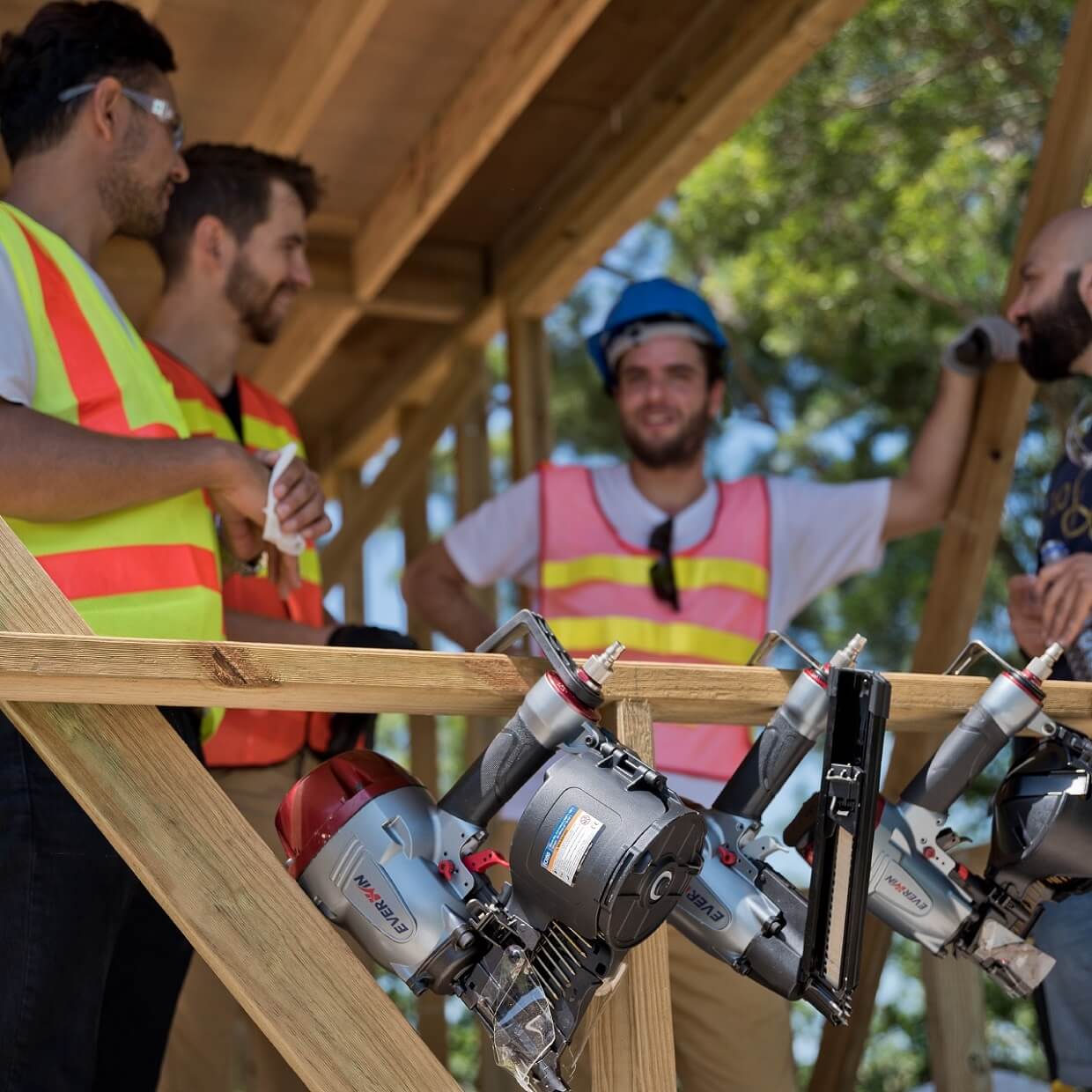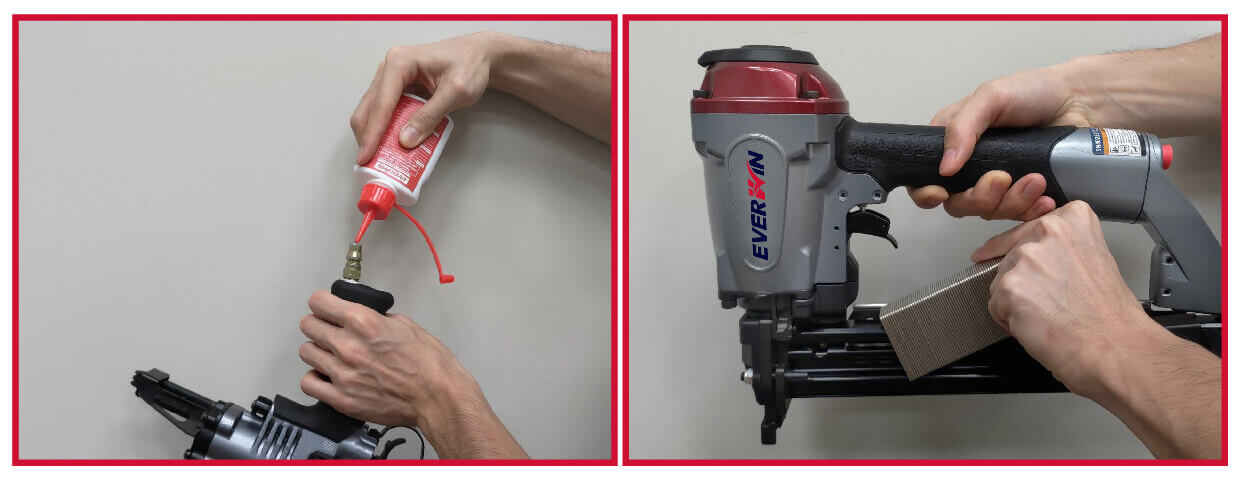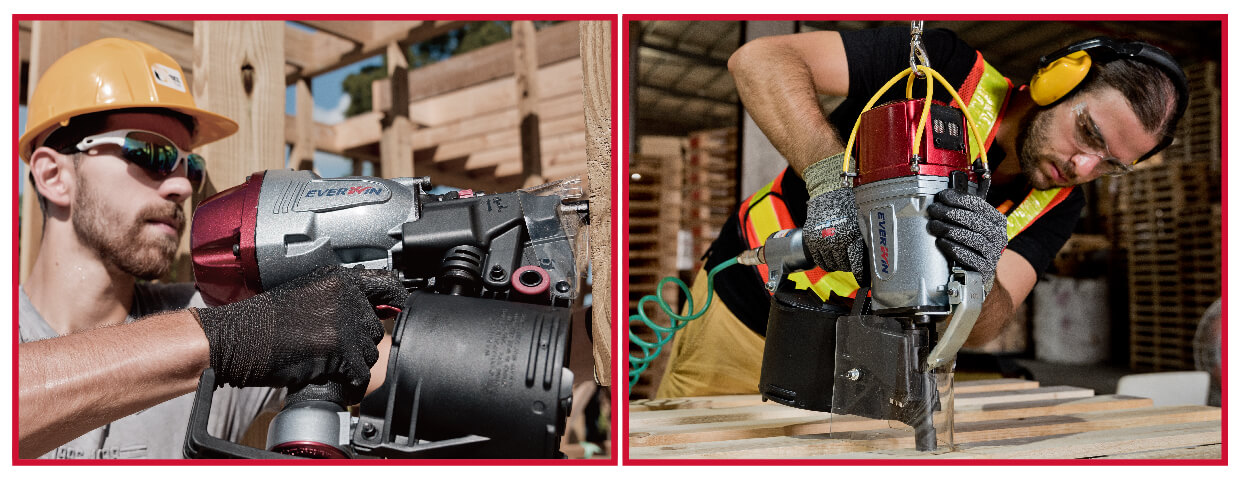
4 Quick Steps to Nail Gun Safety Reminder
With the ability to increase productivity in your workplace and reduce workday hours, nail guns are the most useful and productive tools. However, when not handled properly they can also cause unnecessary injuries. By continually working together with our customers, we can help reduce the risk of injury among users of our EVERWIN product line. Let’s go over four quick steps to prevent injury in the workplace.
1) Trigger Option
To ensure maximum safety and a most efficient workday, you should be considering safety features from the time of purchasing a nail gun. The right type of trigger can greatly help reduce the risk of accidents. The full sequential trigger is the safest technique to fire a nail. Full sequential trigger only fires the nail when you first push the contact tip to the work surface and then pull the trigger. You must repeat the point of contact steps to discharge the nail each time. This mechanism eliminates bump firing.Full sequential trigger nail guns are preferred for less experienced employees, reducing injuries by half. The full sequential trigger feature is used in EVERWIN FCN90LB-ST and EVERWIN SCN66B-ST. While full sequential trigger is considered the safest mechanism, contact fire triggers which discharge when the contact tip and trigger are activated in any order, is better operated by more experienced users. Some examples of the contact trigger feature are used in EVERWIN FCN90B-CT and EVERWIN SCN65-CT and EVERWIN FSN3490-CT. If your workplace uses multiple types of triggers, practice color coding to identify the different triggers. The EVERWIN product line identifies full-sequential actuation with a Grey/ Silver trigger and contact triggers actuation with a black trigger.

2) Ensure Proper Operational Training
Firstly, the manual for the nail gun should be readily available and the manufacturer’s label and instructions should be clearly understood. This ensures that the nail gun is operated as intended. Adhere to the basic instructions for maintaining tools including:
- Details of wiping
- Cleaning air filter and feed system
- Lubricating, checking seals and hosing
- Matching the tool with the right fastener specs
- Loading the magazine
- Using the correct type of air compressor for your models.

Be familiar with the risk factors of poor operational training:
- Unintended nail discharge from double fire
- Unintended nail discharge from hit safety contact with the trigger squeezed
- Bypassing safety mechanisms and disabling features
Remember any broken or malfunction nail guns should be immediately removed from service and followed up for inspection and repairs. It is ideal to test shot your nail gun into a spare material to confirm the loading and desired depth.
3) Ensure Proper Work Procedures
After operational training, establish workplace rules to recognize risk factors and ensure safety on the worksite. Common training points should identify how to recognize lumber nots, nails, straps, and how to approach ricochet-prone work surfaces. Be reminded of the dangers of awkward position work and working at height. Maintain three points of contact with the ladder. Always disconnect the compressed air when:
- Leaving the nail gun unattended
- Traveling up or down a ladder
- Clearing jammed nails
Be familiar with the risk factors of poor work procedures:
- Nail penetration through lumber work piece
- Nail ricochet after striking a dense surface
- Missing the work surface
- Awkward work position

Follow proper housing keeping in areas where nail guns are used. Try to ensure the hose is not in a walkway causing potential trip hazards and loose nails are attended to.
4) Provide Personal Protective Equipment and First Aid
Wearing protective gear will avoid unintended injuries:
- Safety shoes
- Hard hats
- High impact eye protection
- Hearing protection

Conclusion
While the popularity of nail gun ownership rises, so do unnecessary injuries. Always inspect your worksite and improve training practices, and by working together with tool manufacturers and nail gun users we can help reduce the risk of injury.
